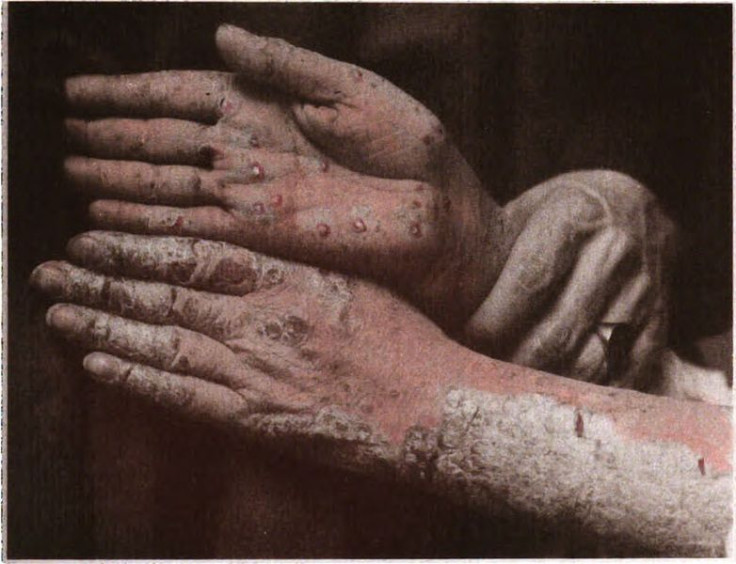Psoriasis Treatment: 5 Natural Ways To Alleviate The Skin Disorder At Home

The chronic skin condition psoriasis is the most prevalent autoimmune disease in the United States, affecting 7.5 million Americans, and 125 million people worldwide, says the National Psoriasis Foundation. The serious disease can negatively impact a patient physically and emotionally. Over 60 percent of patients report that the disease interferes with their everyday lif, including daily activies like sleeping, using your hands, and walking. In some cases, the itching and pain makes it unbearable for patients to walk and sleep, while the plaques on the hands and feet act as a barrier for to engage in contact-on-contact activities, like sports. In addition, the frustrating skin treatment can cause patients to feel embarrassed and not leave the house because they feel extremely self-conscious about their appearance
The reality is that those living with psoriasis have to fight the urge to scratch the red, flaky, and itchy patches of dry skin on a daily basis. But that doesn't mean the condition has to take over your life.
Read More: Psoriasis Linked To Other Serious Conditions, Including Pulmonary Disease And Diabetes
Treating Psoriasis
Unfortunately, psoriasis in the U.S. is often undertreated or not treated at all, according to a study published in JAMA Dermatology. Researchers used data from a national survey collected by the National Psoriasis Foundation biannually, from January 2003 to December 2011 to examine the extent of undertreated and untreated psoriasis and psoriatic arthritis in 5,604 survey respondents out of a database of more than 76,000 patients.
They found that 36.6 to 49.2 percent of patients with mild psoriasis, 23.6 to 35.5 percent with moderate psoriasis, and 9.4 to 29.7 percent with severe psoriasis were found to be untreated by medical professionals. Approximately only 30 percent and 22 percent of patients with moderate and severe psoriasis, respectively, were given topical agents to relieve the skin condition by their healthcare professionals. "Nontreatment and undertreatment of patients with psoriasis and psoriatic arthritis remain a significant problem in the United States," wrote the authors of the study.
Currently, there is no cure for psoriasis. However, there are options, such as as topical and systematic treatments, that can help ease the symptoms of the skin conditions. These treatments aim to reduce inflammation and plaque formation, remove the scales, and smooth the skin, says Mayo Clinic. There are also a number of natural, at-home treatments, that can alleviate symptoms.
1. Soak It Up
Adding oil, colloidal oatmeal, Epsom salts, or Dead Sea salts to a warm bath can help remove the dry patches of skin and alleviate itching and burning. But be careful: pure hot water can further aggravate your skin condition. It is best to soak in your tub for 15 minutes and then apply a moisturizer or oil to the skin as soon as you finish your bath, says the National Psoriasis Foundation.
2. Use A Moisturizer
Psoriasis causes your skin to dry and can therefore lead to scratching, itching, and burning which can make the skin condition worse. To prevent these skin-aggravating symptoms, it is important to always keep your skin moist by applying a moisturizer all over your body. Moisturizing the body will prevent dry plaques from making it difficult for you to move and help you maintain your flexibility, says Discovery Health. Petroleum jelly is a simple moisturizing option.
3. Spice It Up
Look no further than your spice rack to naturally treat your psoriasis at home. According to Discovery Health, capsaicin, the substance that gives the cayenne pepper its heat, can help relieve pain and itching by blocking the communication system of sensory nerves. Capsaicin has been proven to not only alleviate the skin but also get rid of plaques. Look for a cream that contains .025 to .075 percent capsaicin. It will take approximately a week for the cream to start working, and it is best to keep it away from your eyes and mucous membranes to prevent a burning sensation.
4. Use Vinegar Dip
Apple cider vinegar is commonly used to treat minor burns and skin inflammation, and it’s also used as a disinfectant. The National Psoriasis Foundation states that patients can use a vinegar dip to treat their skin condition. If your fingernails and toenails are infected, you can pour some vinegar in a bowl and dip your nails for a few minutes. Also, patients can moisten cotton balls with vinegar, and then apply it to the plaques on the body.
5. Wrap It Up
Carefully wrapping up the skin after a topical ointment or moisturizer has been applied will help the medication stay in place for a longer period of time, says Psoriasis-remedies.com. This is an effective way to cover your sores and let the moisturizer be absorbed into the skin. It is advised to let your medication soak in and then apply the kitchen plastic wrap or the over-the-counter patch, Actiderm. One hour of this natural treatment will suffice.
Read More: Low-Calorie Diets Found To Treat Psoriasis In Overweight Patients



























